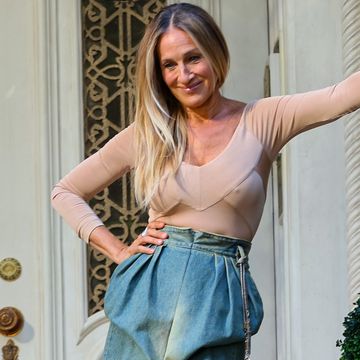Are the Latest Fashion Styles Important for Women?
Fashion has always been more than just clothing — it’s a language, a reflection of society, and for many, a means of self-definition. But are the latest fashion styles truly important for women, or is their value overstated? The answer is not one-size-fits-all. Fashion trends matter differently to different women, depending on their identity, values, career, and personal lifestyle.
1. Fashion as a Tool for Self-Expression
For many women, fashion is a creative outlet — a visual form of self-expression. Just as a painter uses colors and shapes to convey emotion, women can use clothing to project personality, mood, or beliefs. A bold, structured blazer may express confidence and ambition, while flowy bohemian dresses might suggest a free-spirited, earthy vibe.
Fashion trends can offer a constantly evolving palette of styles, cuts, and aesthetics to choose from. For those who enjoy changing their look with the seasons, trends provide fresh inspiration to communicate who they are — or who they want to be — at a given moment in time.
2. Psychological Impact: Confidence and Identity
Clothing can significantly influence how a woman feels about herself. Studies in enclothed cognition (the psychological effect clothes have on the wearer’s behavior and attitude) suggest that what we wear can influence self-esteem, decision-making, and how we interact socially.
Wearing fashionable clothes that align with current trends might make a woman feel more confident, relevant, or socially integrated, especially in environments where image matters — such as events, urban workplaces, or social media platforms.
However, it’s important to note that true confidence often comes from dressing in a way that feels authentic, not necessarily trendy. For many women, personal style is a stronger source of empowerment than fleeting trends.
3. Cultural and Social Relevance
Fashion is not created in a vacuum — it responds to and reflects cultural, political, and social changes. Women’s fashion, in particular, has long been tied to liberation movements, identity politics, and shifting gender norms.
- The power suit of the 1980s symbolized women’s entry into the corporate world.
- The rise of modest fashion highlights how diverse cultural and religious identities are shaping modern style.
- Eco-conscious clothing trends reflect a growing concern for the planet, especially among younger generations.
Following trends can be a way for women to engage with the broader cultural moment, participating in dialogues about identity, ethics, and belonging.
4. Professional and Social Expectations
In some industries, particularly those related to media, fashion, retail, entertainment, and public relations, staying up to date with fashion is more than personal — it’s professional. Women in these roles may need to keep pace with trends to project credibility, innovation, or brand alignment.
Similarly, in social settings where appearance is emphasized (such as influencer culture or high-society events), fashion trends can help women feel prepared and polished.
That said, dressing for success doesn’t always mean following trends. Many women achieve this by curating a timeless wardrobe with high-quality staples that reflect both professionalism and individuality.
5. The Downsides of Trend-Chasing
While there are benefits, there are also drawbacks to placing too much importance on fashion trends:
- Fast Fashion and Waste: The constant turnover of trends fuels overconsumption and contributes to environmental harm.
- Economic Pressure: Keeping up with trends can be costly, especially when styles change rapidly.
- Mental Burnout: The need to look “on-trend” can become exhausting or lead to comparison-driven anxiety, especially in the age of social media.
Not all women find meaning or joy in following seasonal fads. Many prefer to invest in durable, versatile pieces and focus on quality, comfort, or ethical sourcing over trendiness.
6. Fashion vs. Personal Style
There’s a key distinction between fashion and style:
- Fashion is about trends — what’s popular at a given time.
- Style is personal — it’s how someone expresses themselves regardless of what’s trending.
Many women choose to develop a signature style that may or may not include trendy elements. Icons like Audrey Hepburn, Coco Chanel, and even modern figures like Meghan Markle are celebrated for timeless, refined looks that transcend seasonal fads.
Ultimately, women don’t have to choose between the two. Some enjoy blending timeless pieces with trendy accessories or silhouettes, creating a wardrobe that feels both current and uniquely their own.
Conclusion: It’s a Personal Choice
So, are the latest fashion styles important for women? They can be, but they don’t have to be.
Fashion trends can offer inspiration, confidence, cultural relevance, and creative expression. But they’re not essential for every woman’s sense of identity, self-worth, or success. What truly matters is wearing what makes you feel strong, authentic, and comfortable in your skin — whether that’s high-fashion couture or your favorite pair of jeans from five years ago.
Fashion should be a tool for empowerment, not pressure.
Would you like this formatted as a blog post, with images or style tips added?

